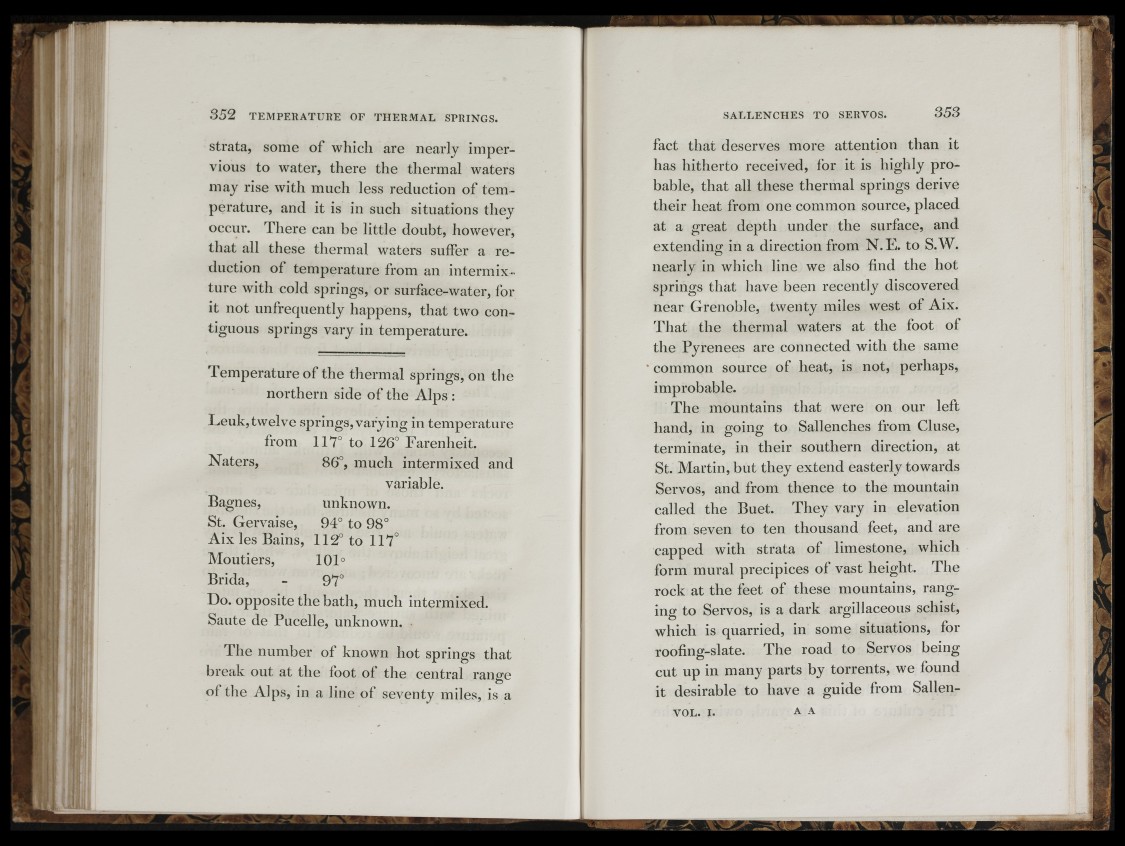
strata, some of whicli are nearly impervious
to water, there the thermal waters
may rise with much less reduction of temperature,
and it is in such situations they
occur. There can be little doubt, howev’er,
that all these thermal waters suffer a reduction
of temperature from an intermixture
with cold springs, or surface-water, for
it not unfrequently happens, that two contiguous
springs vary in temperature.
Temperature of the thermal springs, on the
northern side of the Alps :
Leuk, twelve springs,varying in temperature
from 117° to 126° Farenheit.
Naters, 86°, much intermixed and
variable.
Bagnes, unknown.
St. Gervaise, 94° to 98°
Aix les Bains, 112° to 117°
Moutiers, 101°
Brida, - 97°
Do. opposite the bath, much intermixed.
Saute de Pucelle, unknown.
The number of known hot springs that
break out at the foot of the central range
of the Alps, in a line of seventy miles, is a
fact that deserves more attention than it
has hitherto received, for it is highly probable,
that all these thermal springs derive
their heat from one common source, placed
at a great depth under the surface, and
extending in a direction from N.Pk to S.W.
nearly in which line we also find the hot
springs that have been recently discovered
near Grenoble, twenty miles west of Aix.
That the thermal waters at the foot of
the Pyrenees are connected with the same
common source of heat, is not, perhaps,
improbable.
The mountains that were on our left
hand, in going to Sallenches from Cluse,
terminate, in their southern direction, at
St. Martin, but they extend easterly towards
Servos, and from thence to the mountain
called the Buet. They vary in elevation
from seven to ten thousand feet, and are
capped with strata of limestone, which
form mural precipices of vast height. The
rock at the feet of these mountains, ranging
to Servos, is a dark argillaceous schist,
which is quarried, in some situations, for
roofing-slate. The road to Servos being
cut up in many parts by torrents, we found
it desirable to have a guide from Sallen-
V O L . I . A A